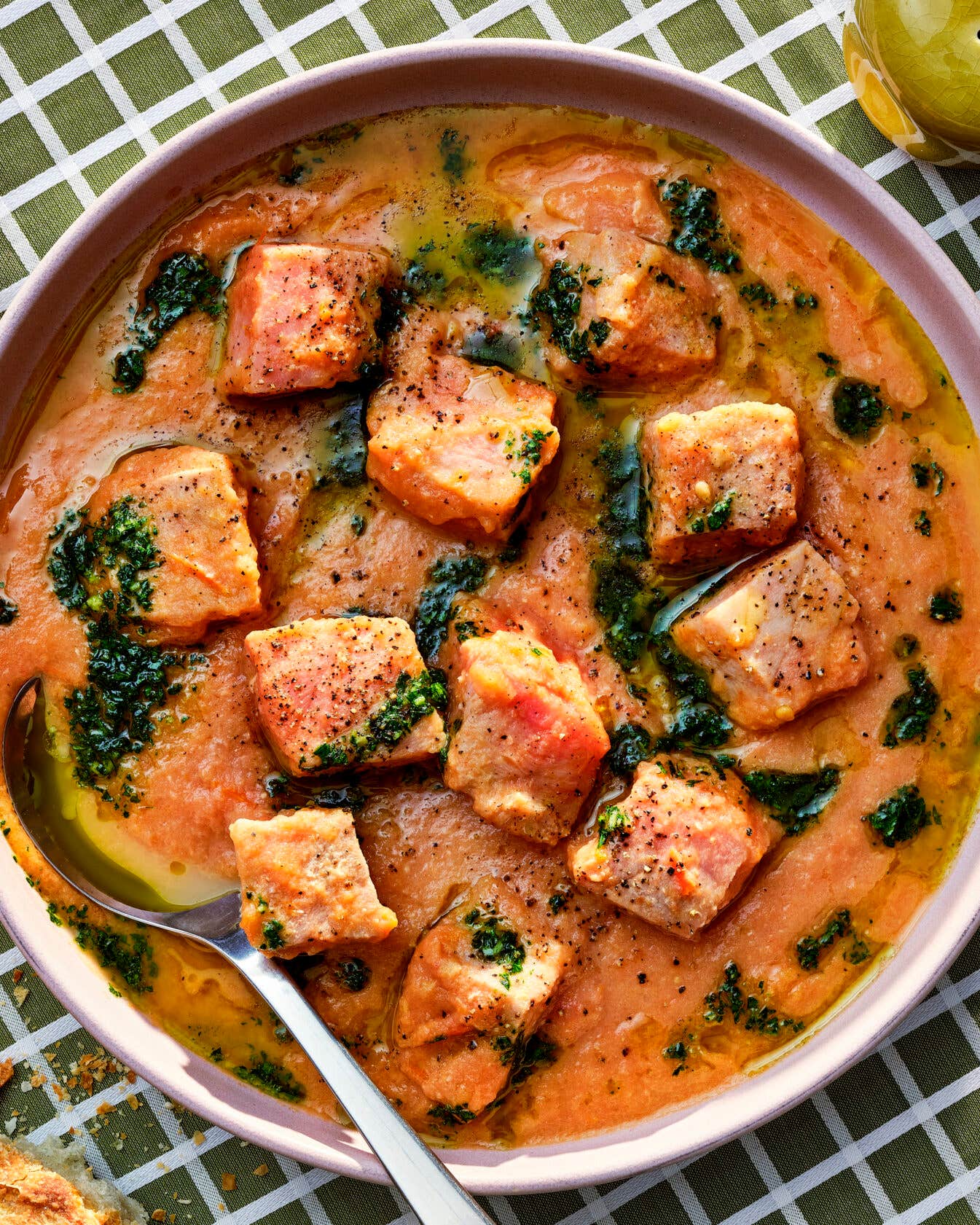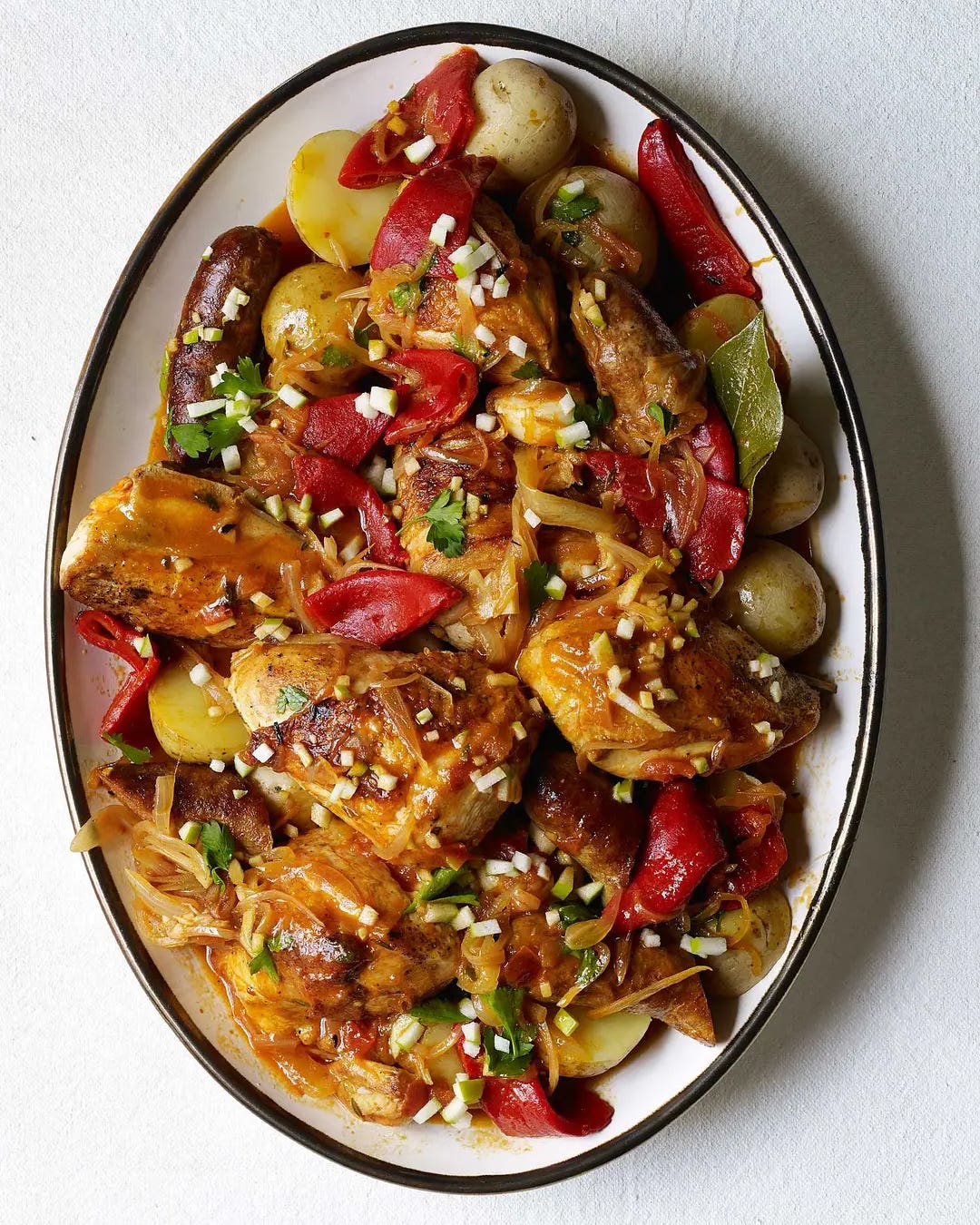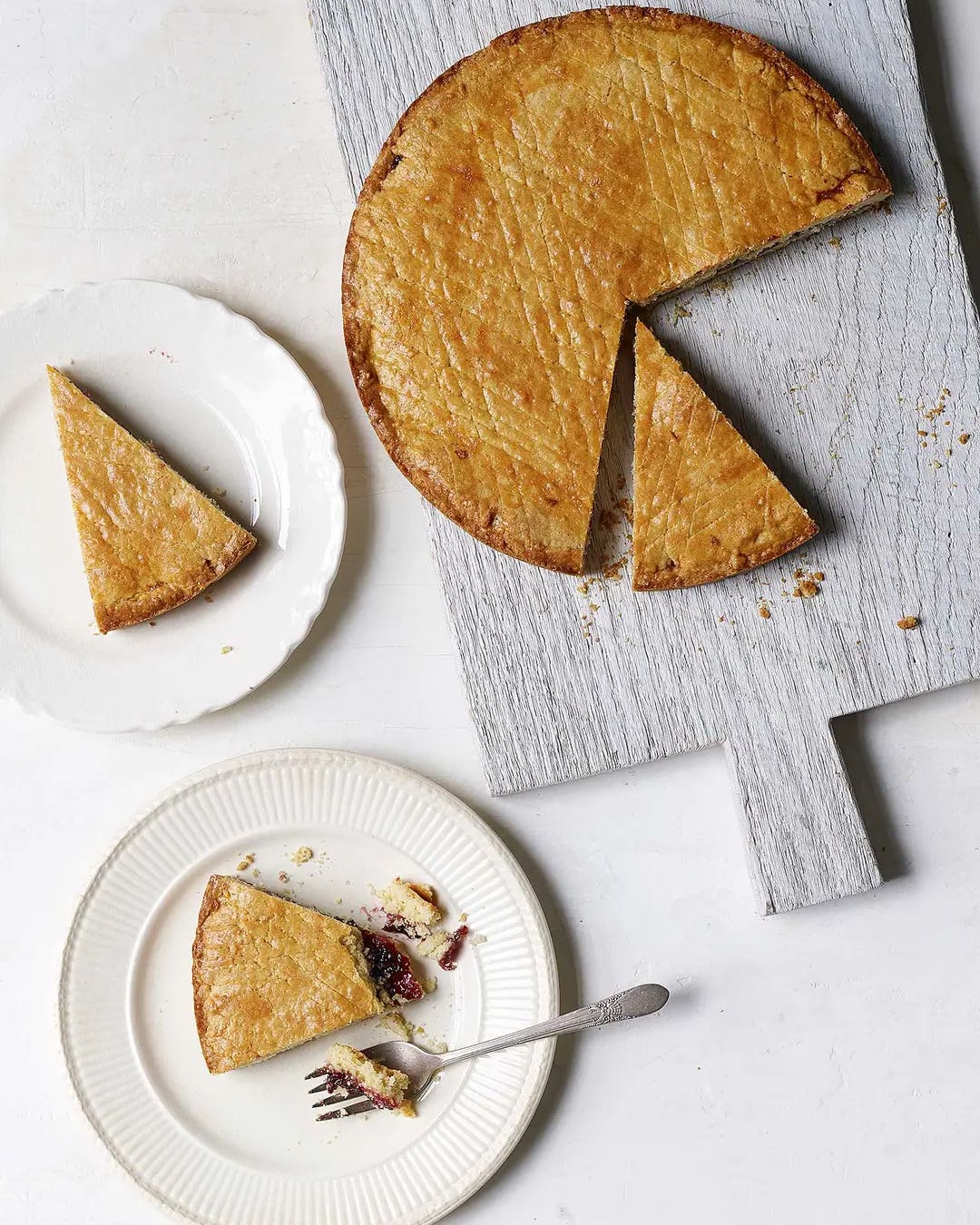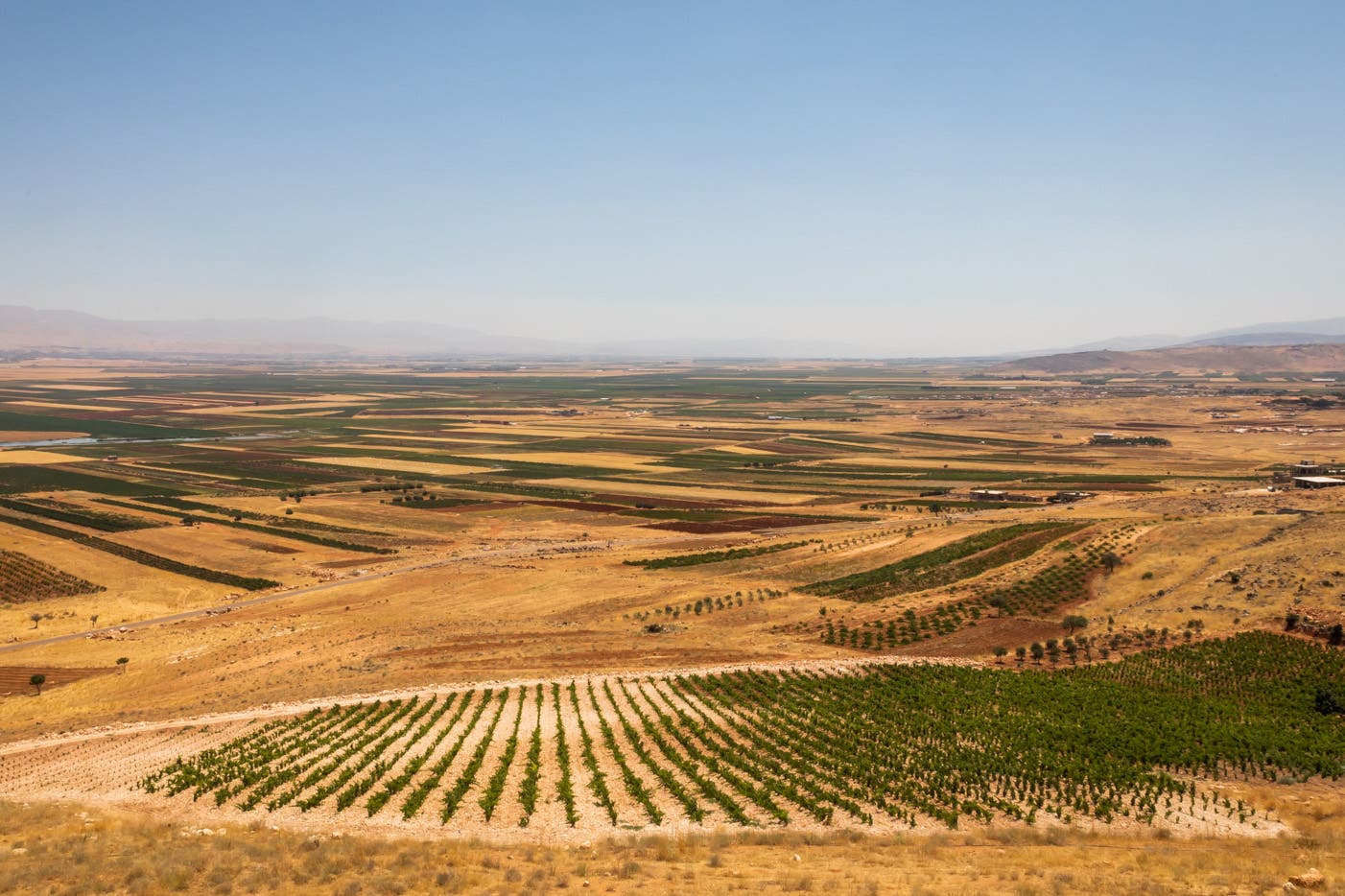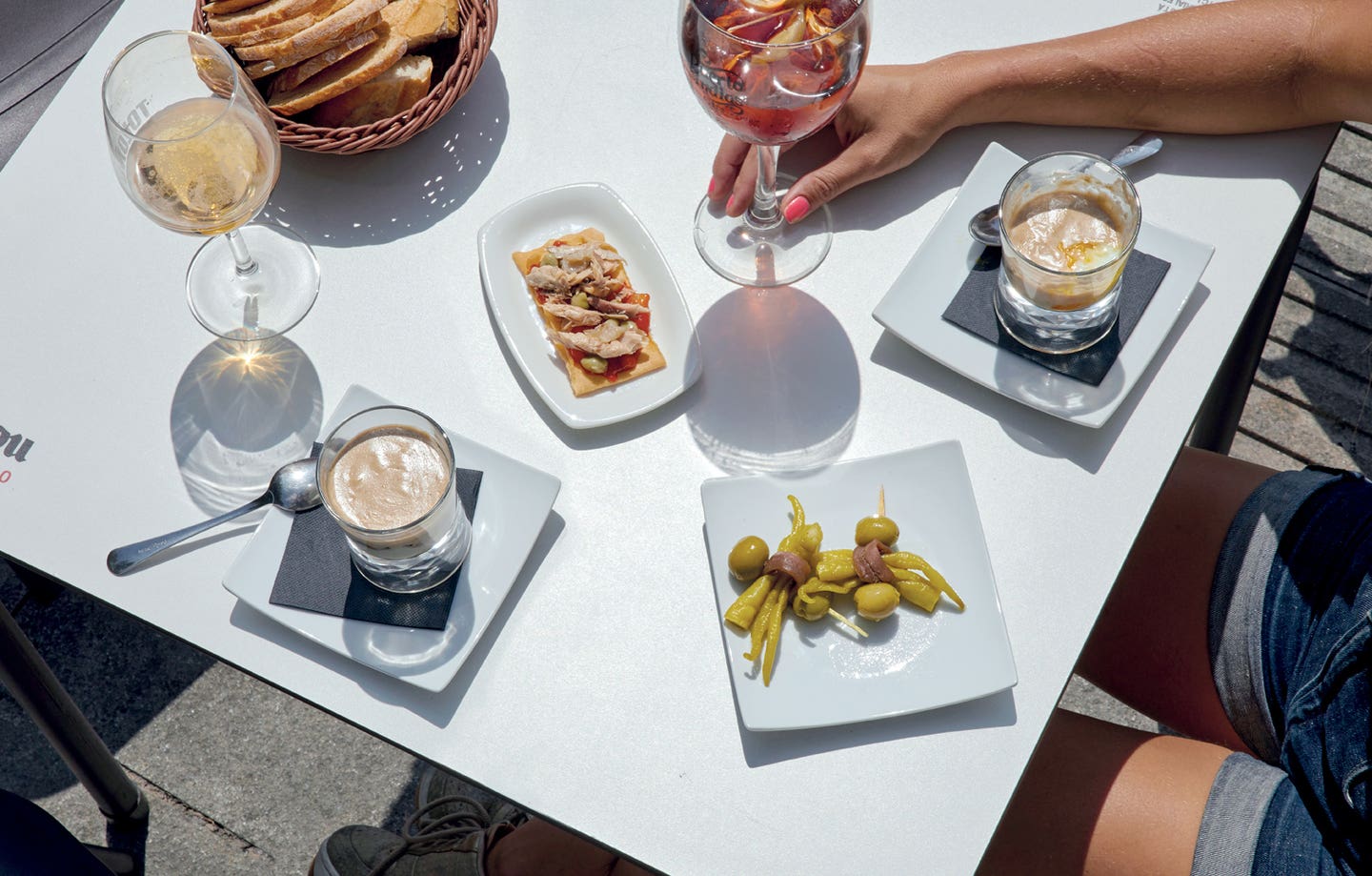
The Pintxo Bars I Can’t Live Without in San Sebastián
I wrote a whole cookbook on the quintessential Basque bites. Here’s where to find my favorites.
San Sebastián may be the only city on earth whose key sights include man-made mountains of canapés, seafood skewers, and creamy croquetas—finger food as far as the eye can see. I’m talking about pintxos, the elaborate miniature dishes that have long played protagonist in this idyllic coastal city’s tourist scene.
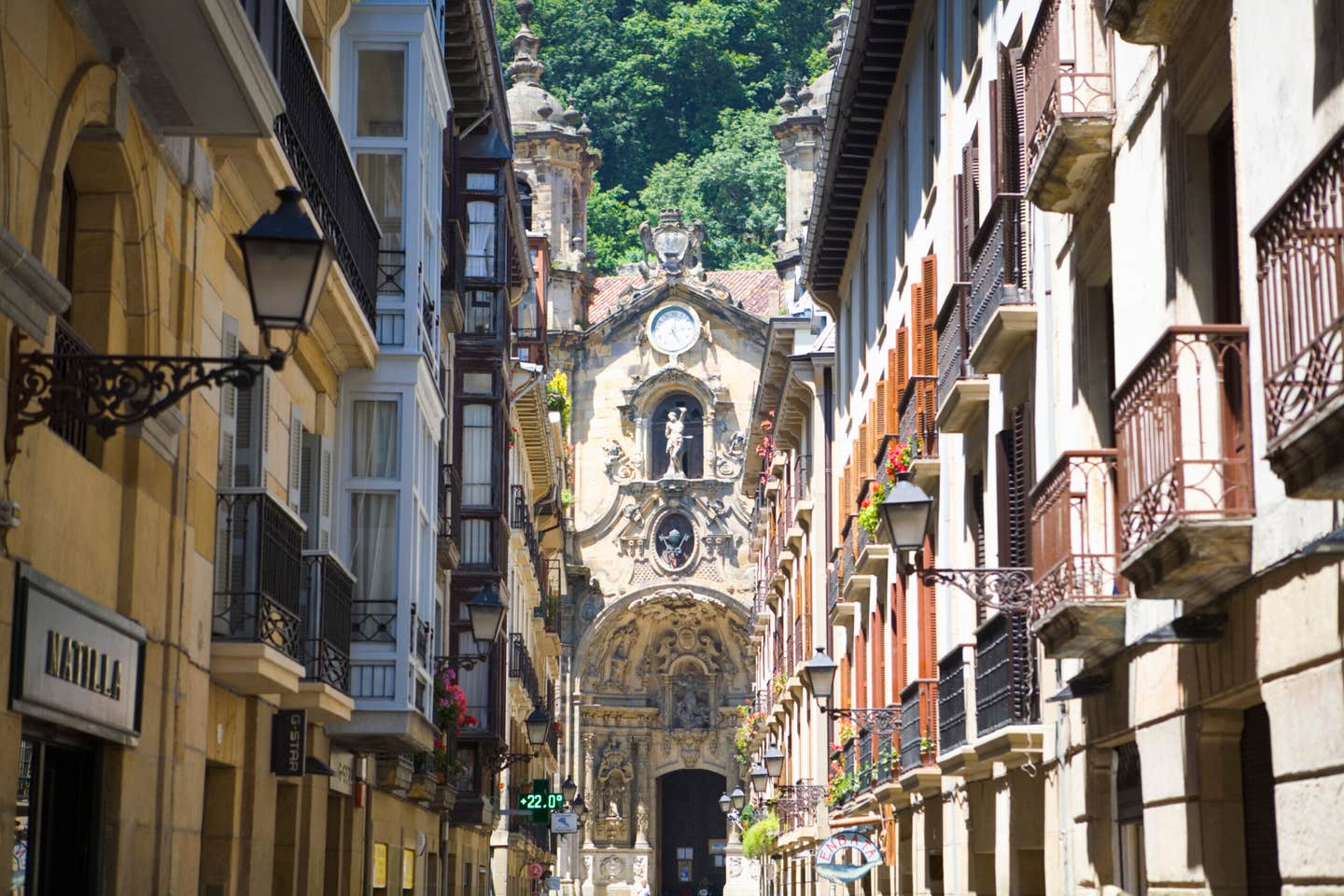
Pintxos are a Basque tradition, and they can be as simple as a skewer of canned tuna and a pickled pepper or as involved as perfectly portioned seared foie gras served over warm apple compote. Some are dessert: It would be a travesty to leave San Sebastián without trying La Viña’s viral “burnt” cheesecake.
Pintxos represent a century of culinary evolution in this corner of the Basque Country, and in my 14 years living here and writing about food, I’ve come to think of them as a way of life. Stopping at a bar for a snack and a glass of wine is a daily ritual for locals—myself among them.
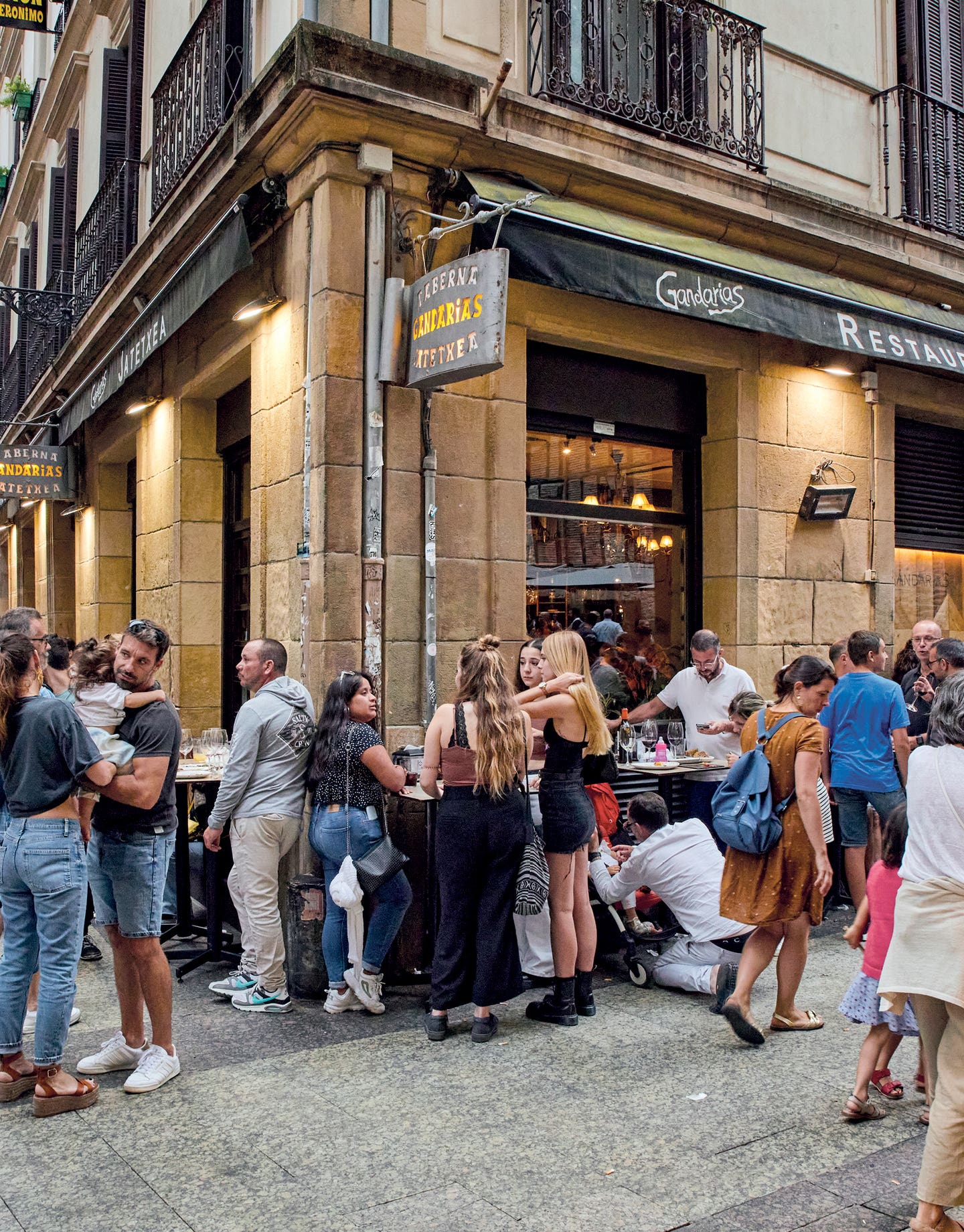
The beauty of San Sebastián’s pintxo scene is that it takes well to a greatest-hits roundup: Virtually every bar here has a signature dish locals devour before hitting up the next watering hole. To that end, what follows is an edible roadmap that will take you from the La Concha Beach promenade to the charming old town and across the river to residential Gros, where I live. Be sure to pace yourself—a bit of restraint will ensure you maximize the number of pit stops.
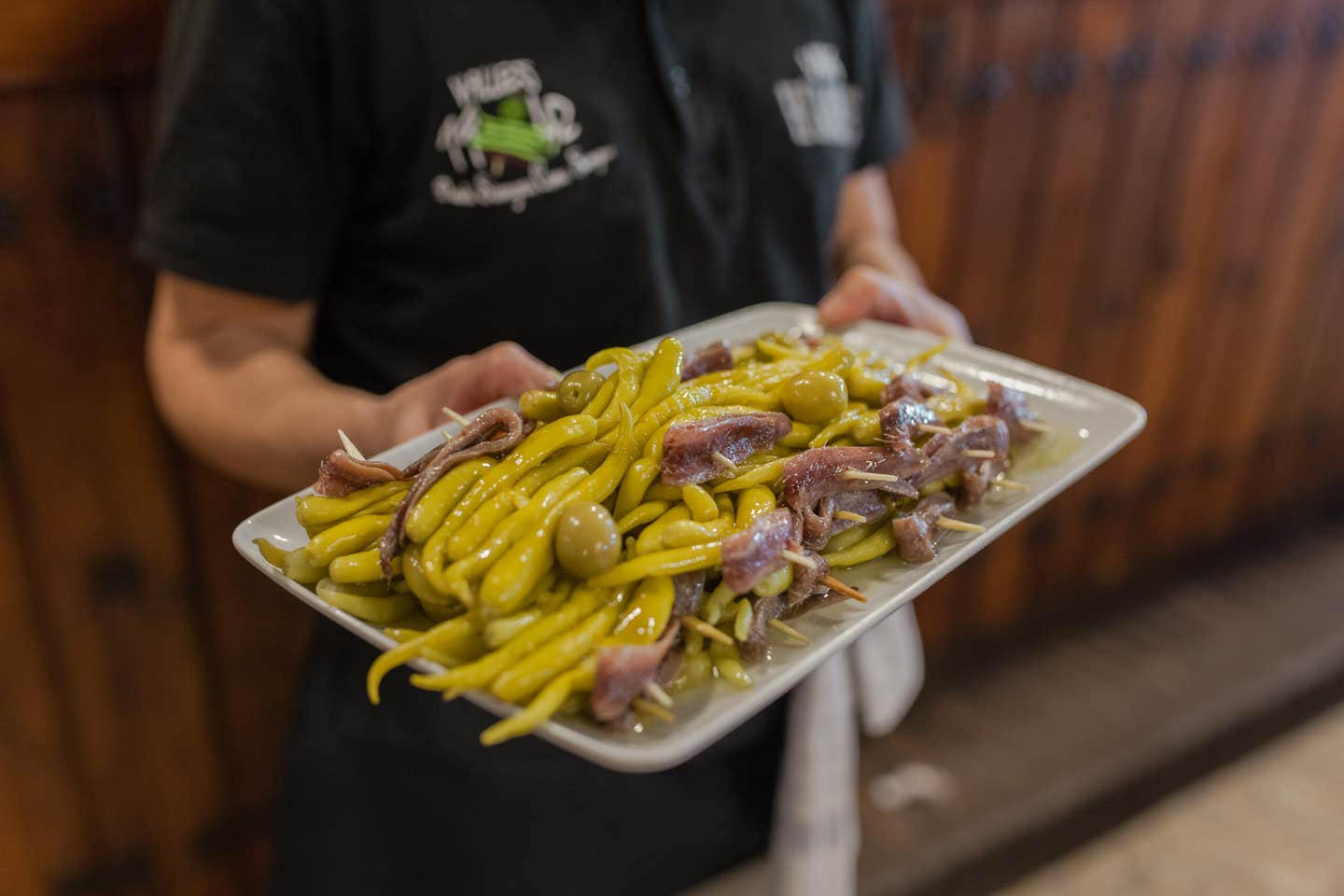
Gilda at Casa Vallés
Was the gilda the first pintxo, as so many guides breezily claim? No, but it is the holy grail of the banderilla (“skewer”) genre. When pintxos were invented about 100 years ago, they were essentially snacks strung together on a toothpick. The gilda was among them, a holy trinity of manzanilla olive, meaty salt-cured anchovy, and hot pickled guindilla pepper. To try it, stop into its alleged birthplace, Casa Vallés, a frozen-in-time bar founded in 1942 in the city center. The name “gilda” comes from the Rita Hayworth character in the eponymous movie, so called because both were verde (green, which in Spanish also means salacious), picante (spicy, in the sexy sense), and salado (salty, as in funny or charming). The memorable moniker has helped keep the pintxo on everybody’s lips—and in their stomachs—all these years.
Tortilla Española at Antonio Bar
Beloved across Spain, tortilla española may be the country’s de facto national dish, but few cities take the oozy potato omelet as seriously as San Sebastián. A good tortilla—ingredients: potato, eggs, onions, and oil—embodies the phrase “greater than the sum of its parts,” and the tiny, nondescript Antonio Bar serves what I consider to be the best in town. Antonio’s version is tall, dark, and handsome, thanks to a whopping 28 eggs, extra-caramelized onions, and perfectly confited potatoes.
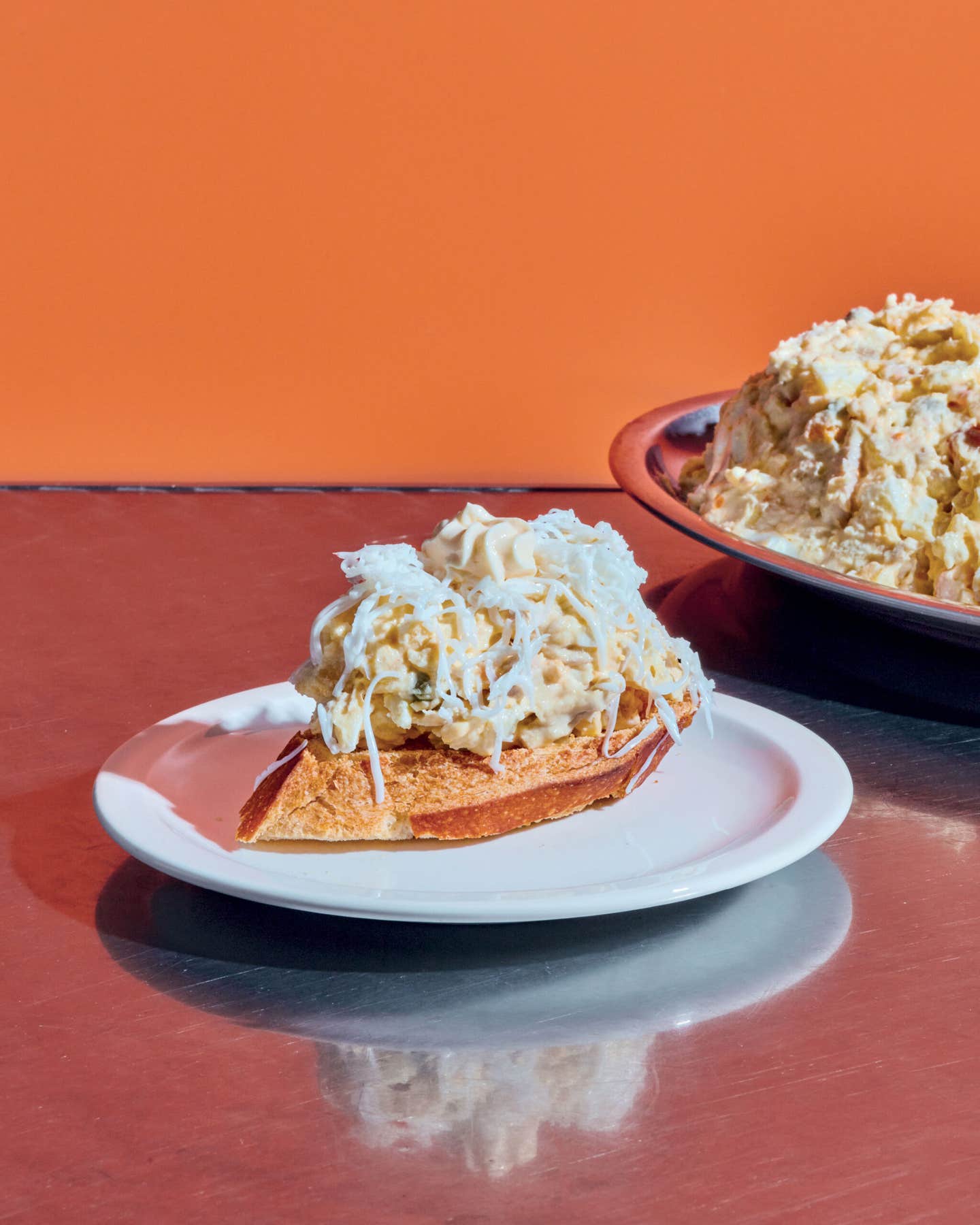
Spain’s other potato-fueled obsession is ensaladilla rusa, the cool, mayo-rich potato salad locals eat for sad desk lunches, at Michelin-starred meals out on the town, and every occasion in between. For me, the best ensaladilla contains nothing more than potatoes, hard-boiled eggs, mayonnaise, and a good sprinkling of flaked canned tuna. Ezkurra agrees, and the bar’s secret is in the sauce: a light, homemade mayo recipe passed down from the current generation’s uncle Alejandro Balda. But don’t take my word for it—trust all the customers who cumulatively go through up to 175 pounds of the famed pintxo each day.
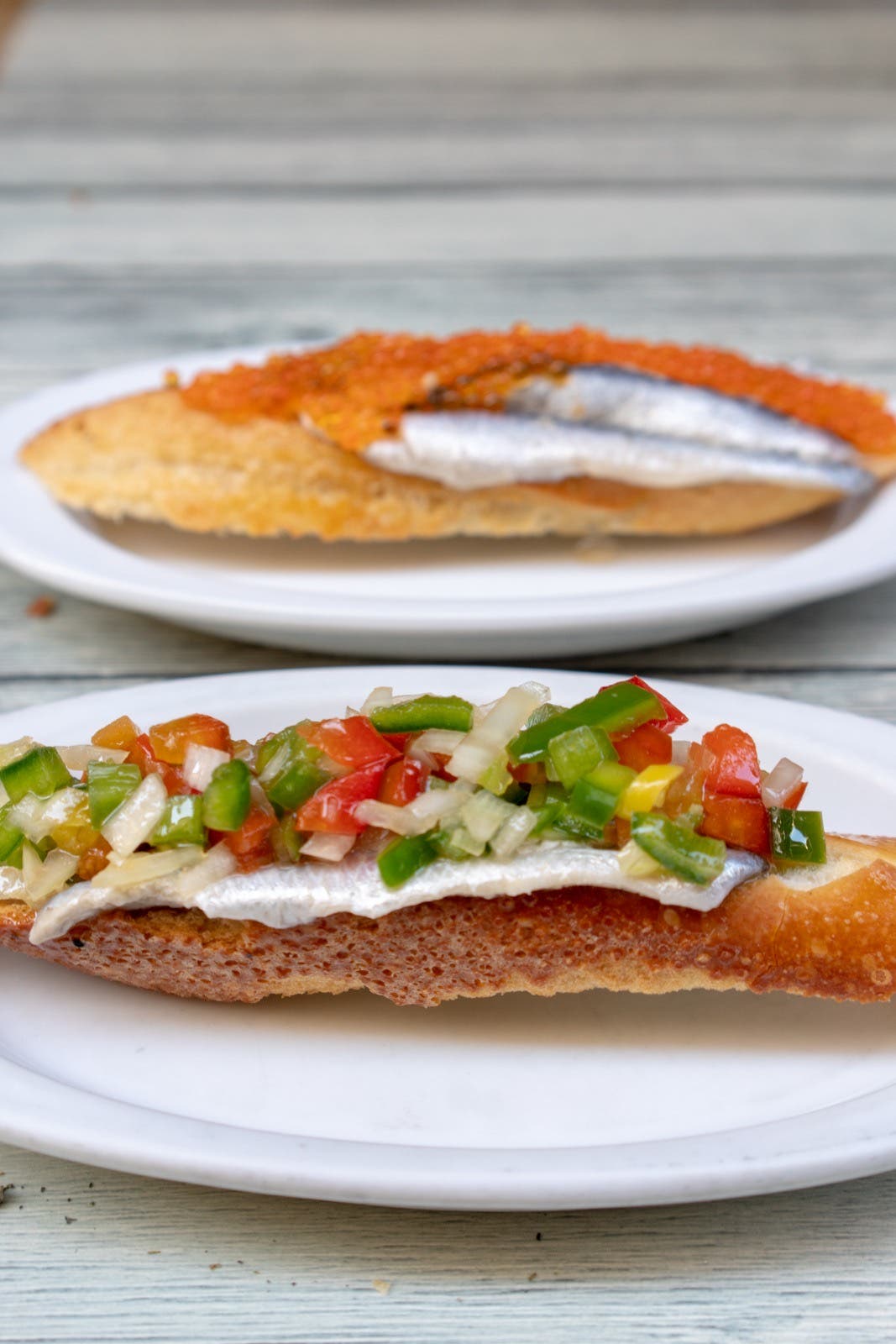
La Jardinera at Bar Txepetxa
Boquerones, or vinegar-cured white anchovies, are a pintxo fixture. Shiny and silver, with a white underflesh, they are the gateway anchovy for the anchovy-dubious—and they’re the specialty at this Parte Vieja cubbyhole. Txepetxa’s anchovies are phenomenally fresh (read: not fishy) and marinated in a top-secret potion. Every anchovy pintxo starts with two glimmering fillets on a warm toasted baguette slice, but from there it’s choose your own adventure: There are more than a dozen toppings and condiments on offer, from spider crab cream to blueberry sauce to—my favorite—crunchy pepper-and-onion jardinera.
Croqueta de Pollo at Bar Urkabe
The important thing to know about croquetas is that there are as many recipes as there are cooks in Spain—and legally speaking, none can be better than one’s own grandmother’s. A perk of being an outsider is that I’m free to rank San Sebastián’s best breaded-and-fried béchamel bites with no fear of finger-wagging. That’s how I wound up at Bar Urkabe in Gros, the kind of locals-only spot where everybody is greeted with a smile and a wave. Here, they simmer the bechamel for their chicken-studded croquetas in the same pan they use to sear the breasts, which gives the croquetas a homey, just-like-mamá’s flavor.
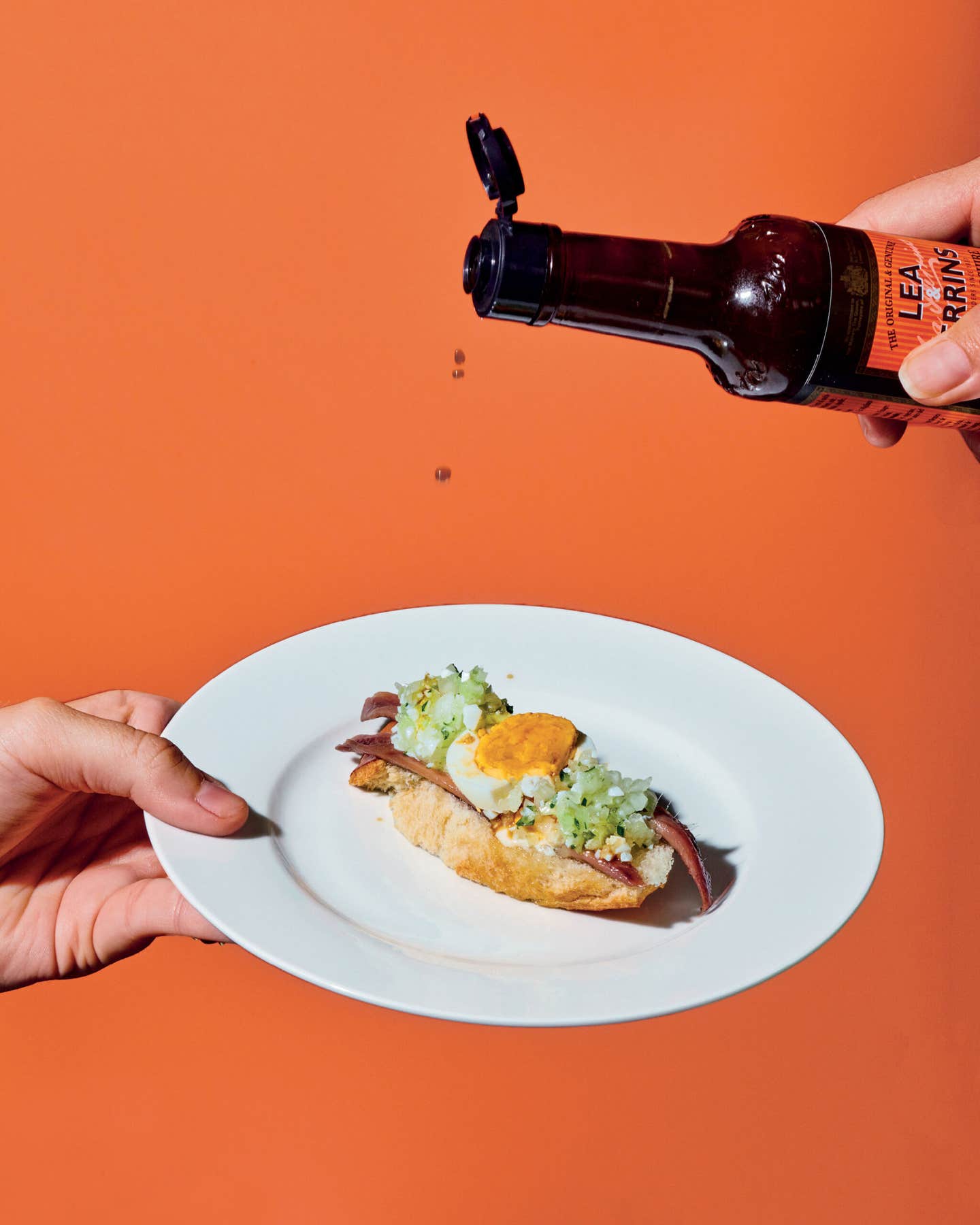
I like to pintxo-hop the way Basques do: one bar, one pintxo, one glass of wine y vámonos. But “La delicia” is my exception to the rule. Is it the way the salt-cured anchovy balances the bite of finely chopped onion parsley vinaigrette? Or the impossibly creamy homemade mayonnaise enlivened by the optional (say yes!) splash of Worcestershire sauce? I don’t know, but I can never have just one delicia. You won’t find this proprietary bite anywhere but La Espiga, the city’s longest-running pintxo bar—so elbow your way to the front, and let them know what you came for.
Pimiento Relleno de Bonito at Bar Martínez
Tinned bonito del norte (albacore) is a pantry staple in the Basque Country, where it’s line-caught and canned in seaside villages. At Bar Martínez, this high-quality tuna gets flaked and folded into a thick tartar sauce, then stuffed into a sweet, roasted, ruby-red piquillo pepper. Perched on a baguette slice and drizzled generously with sharp sherry vinegar and olive oil, the pimiento relleno is a San Sebastián classic, and the poster child of the oldest family-run bar in the Parte Vieja.
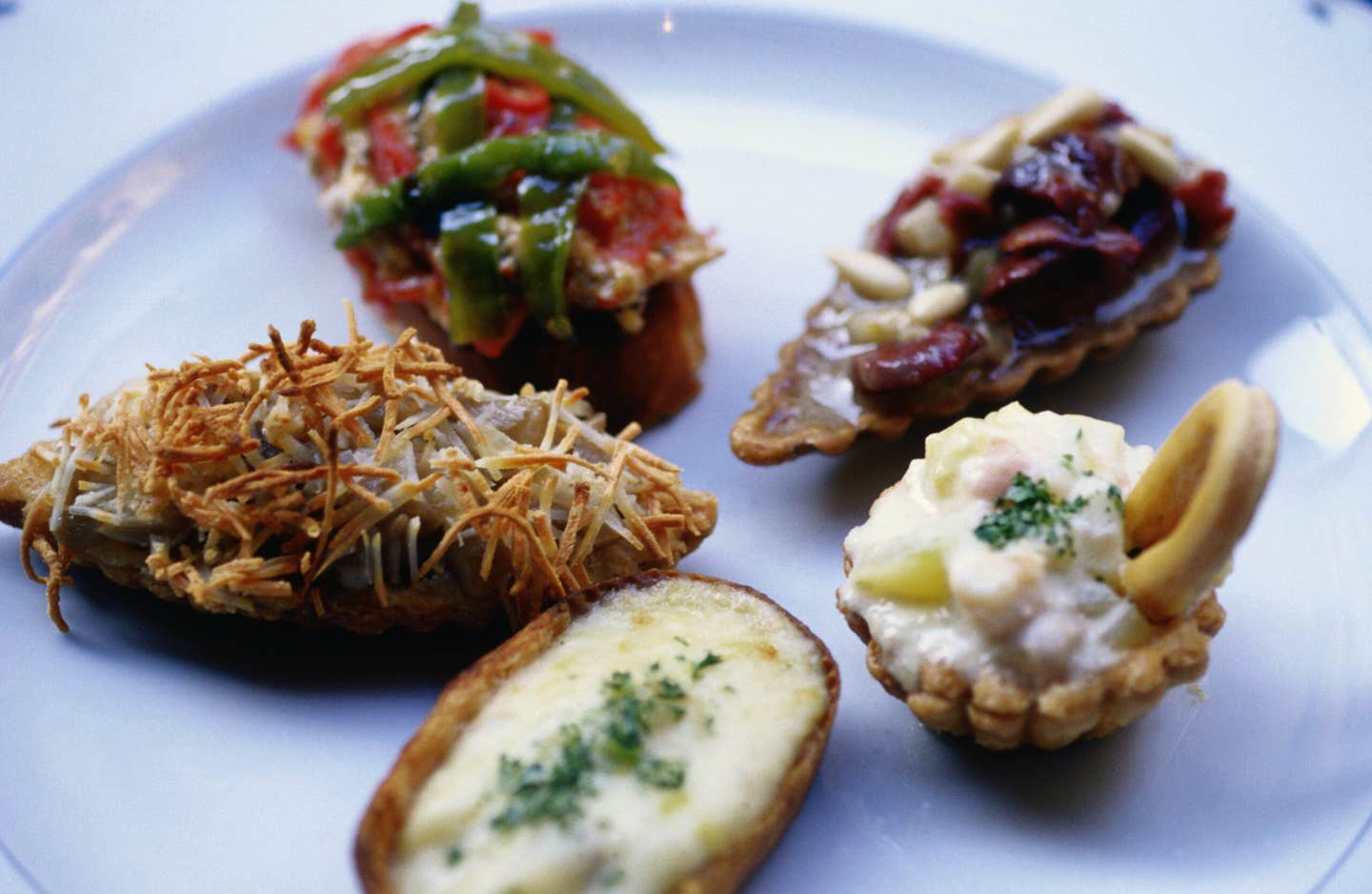
La Txalupa at Bar Bergara
In the 1990s, pintxos had a heyday—Basque nueva cocina was at a creative fever pitch, international ingredients were finding their way into bar bites, and pintxos with splashy names were the law of the land. La Txalupa epitomizes the era: “Boat” in Basque, the txalupa is an oval hull of pastry topped with a duxelle of onions, oyster mushrooms, and creamy cava sauce. Bits of shrimp get folded in at the very end and cook in the residual heat, and then the whole thing is topped with grated Swiss and broiled until golden. The Txalupa is the taste of many locals’ childhoods, and you’ll only find it at this legendary bar in Gros.
Foie a La Plancha at La Cuchara de San Telmo
Scoring a perfectly seared piece of foie gras for a few bucks sounds like a fantasy in this economy, but that’s the must-order pintxo at this sardine-can old-town mainstay open since 1999. The caramelized sliver of duck liver comes with a simple swipe of nothing-added applesauce, whose tart sweetness cuts the fat. Chef Alex Montiel’s secret? A long, slow sear on the plancha (griddle). Drizzled with a Basque cider reduction at the last second, this three-ingredient pintxo is an ode to understated luxury.
Risotto de Idiazabal at Borda Berri
Risotto may be Italian in origin, but pound for pound, this bar in the old town likely sells more of it than any Milanese restaurant. To make it, Borda Berri starts with orzo (as opposed to the traditional rice), which gets toasted until nutty and cooked in wine and vegetable broth in traditional risotto style. The chalkboard menu reads “risotto de Idiazabal,” but Chef Marc Clua whisks in three types of the Basque raw sheep’s milk cheese—fresh, aged, and smoked—for a complex, layered flavor. A drizzle of parsley oil ups the Basque factor and lends a pop of color to this crowd-pleasing pintxo.
Vieira Asada Sobre Ajoblanco at Casa Urola
A walk through La Bretxa market’s row of fishmongers is a parade of whole fish with the shiniest scales and glistening eyes, tanks of live lobsters and shrimp, and shells large and small. My favorite dish incorporating these fresher-than-fresh shellfish comes from Casa Urola, a block from the market. I’m talking about the vieira asada (grilled scallop), which gets a kiss of flame and comes atop a cool and creamy ajoblanco, Spain’s ancient silky almond-bread soup. Local celebrity chef Pablo Loureiro dresses this modern pintxo in a simple yet revelatory coffee vinaigrette, then sprinkles on some pistachios and almonds plus a bit of nori for crunch. The result is a dish worthy of any white tablecloth.
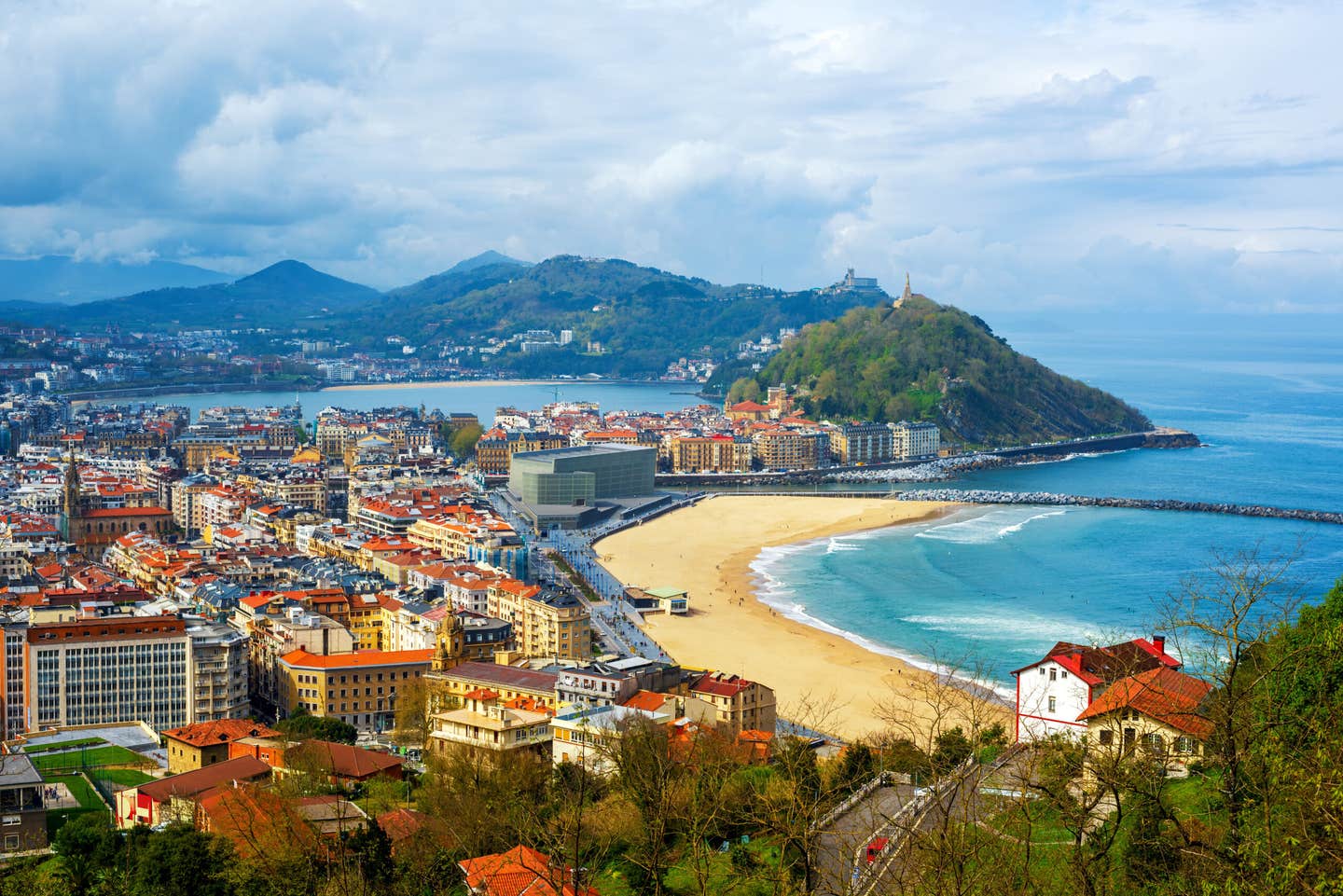
Gazta-Tarta at La Viña
There’s little to say about Basque burnt cheesecake that hasn’t been covered in nearly half-a-million Instagram posts, so I’ll keep this brief: La Viña, where the cheesecake style was invented, remains well worth the hype. Cheesecakes resting in their burned parchment springforms deck the walls of this traditional, family-run bar that always serves the pintxo the same way: in two thin slivers per portion. No matter how many versions of the dessert you’ve tried, it’s worth ending your pintxo hop with the original, a creamy, tangy cheesecake stripped down the bare essentials. Expect neither crust nor garnish—gazta-tarta is all about the eggy custard, lightly burnished around the edges and best enjoyed with a glass of txakoli or Pedro Ximenez sherry.
Keep Reading
Continue to Next Story
